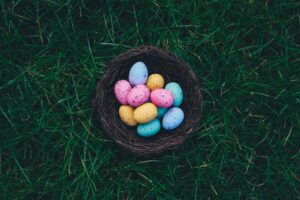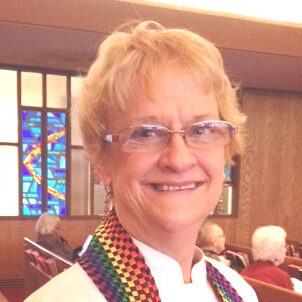More About Those Easter Eggs
When you color eggs with your kiddos this year, you are making a long-time historical connection. In ancient times, both Egyptians and Persians dyed eggs to give to friends, much like many Muslims today give colored eggs to their Christian neighbors. In the Middle Ages, people who had kept themselves from eating eggs during the season of Lent dyed hard-boiled eggs during Easter as a symbol of the rock tomb out of which the Risen Jesus came.
Persians dyed eggs to give to friends, much like many Muslims today give colored eggs to their Christian neighbors. In the Middle Ages, people who had kept themselves from eating eggs during the season of Lent dyed hard-boiled eggs during Easter as a symbol of the rock tomb out of which the Risen Jesus came.
Eggs have long been associated with the fifty days of the Easter season. We can see an eggshell as like Christ’s tomb, guarding new life within.
When we dye hard-boiled eggs different colors of the rainbow, we can remember the rainbow God sent Noah, back in early Old Testament times, as a promise to people and to all the animals on Earth.
Before dying the eggs, you can write or draw on them with crayons, so the wax brings out the pattern against the color of the dye. Or you can use thread to tie small flowers, leaves, or ferns to the eggs, then dip them in dye. That creates lacey imprints of nature, helping us remember God’s promise about the end times, when God will create “a new heaven and a new Earth.”
In Luke’s story about Jesus’ new life after death, women went in the early morning to the garden to finish the burial process where Jesus’ body lay. But two angels appeared and asked them, “Why do you look for the living among the dead? He is not here but has risen.” Hunting for Easter eggs in a garden can remind us of the women’s search for Jesus. Like them, instead of death, we find life. As Paul wrote to the Christians in Rome, God raised Jesus to new life so we can have a new life, too.
Betsy Schwarzentraub
See also: Resurrection Generosity


